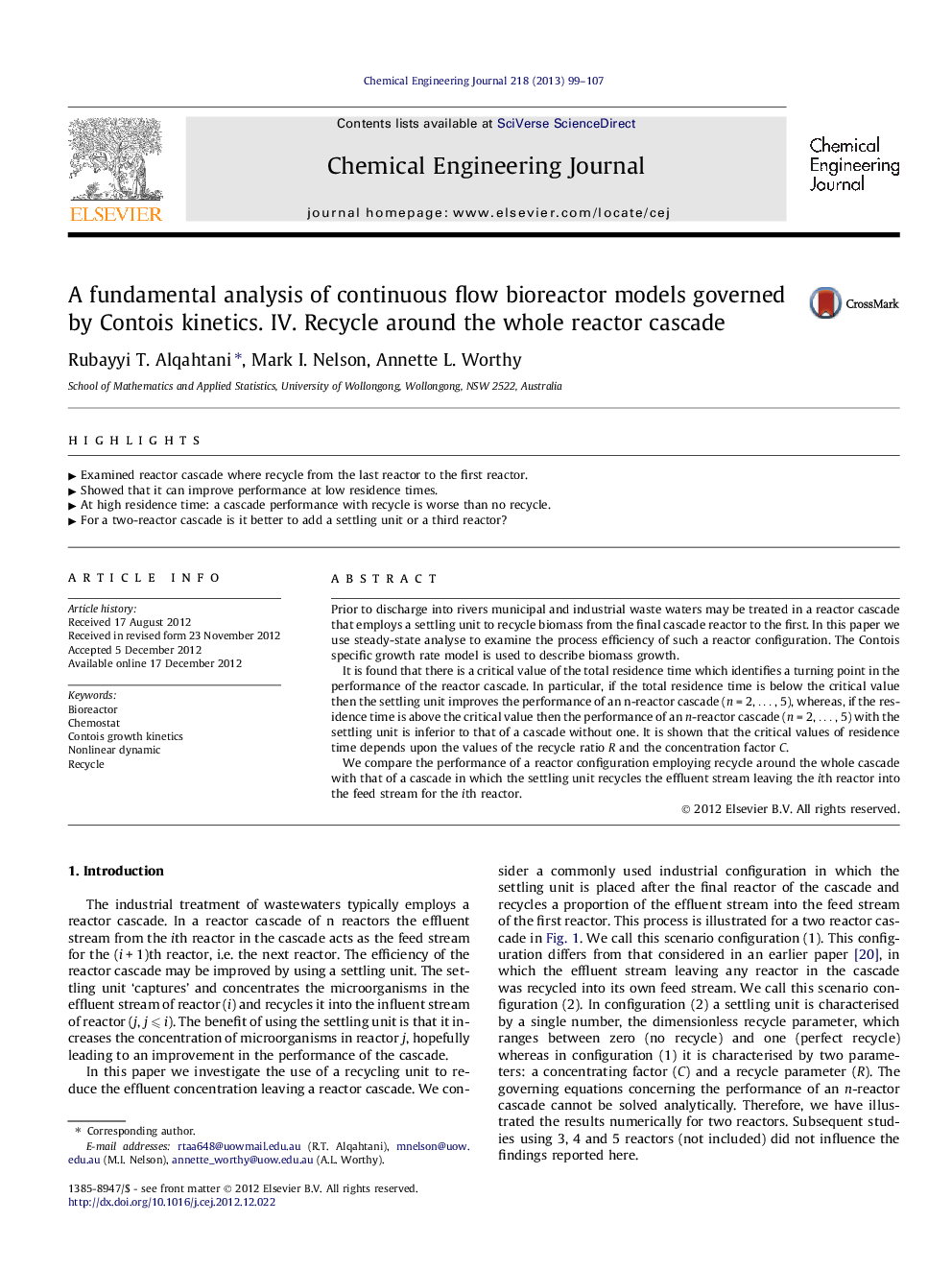| Article ID | Journal | Published Year | Pages | File Type |
|---|---|---|---|---|
| 148764 | Chemical Engineering Journal | 2013 | 9 Pages |
Prior to discharge into rivers municipal and industrial waste waters may be treated in a reactor cascade that employs a settling unit to recycle biomass from the final cascade reactor to the first. In this paper we use steady-state analyse to examine the process efficiency of such a reactor configuration. The Contois specific growth rate model is used to describe biomass growth.It is found that there is a critical value of the total residence time which identifies a turning point in the performance of the reactor cascade. In particular, if the total residence time is below the critical value then the settling unit improves the performance of an n-reactor cascade (n = 2, … , 5), whereas, if the residence time is above the critical value then the performance of an n-reactor cascade (n = 2, … , 5) with the settling unit is inferior to that of a cascade without one. It is shown that the critical values of residence time depends upon the values of the recycle ratio R and the concentration factor C.We compare the performance of a reactor configuration employing recycle around the whole cascade with that of a cascade in which the settling unit recycles the effluent stream leaving the ith reactor into the feed stream for the ith reactor.
► Examined reactor cascade where recycle from the last reactor to the first reactor. ► Showed that it can improve performance at low residence times. ► At high residence time: a cascade performance with recycle is worse than no recycle. ► For a two-reactor cascade is it better to add a settling unit or a third reactor?
